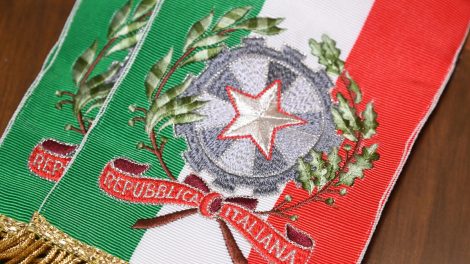Decoding the news. Italy has joined the EU’s SAFE (Security Action for Europe) program, unlocking €14 billion in long-term, low-interest loans to modernize its armed forces and support Europe’s defense industry.
- The move positions Rome at the heart of Brussels’ Readiness 2030 strategy, aimed at deterring Russia and reinforcing Europe’s collective security.
Why it matter. SAFE is the EU’s first major tool to address Europe’s military gaps after decades of underinvestment.
- Deterrence against Russia: Funds will bolster Italy’s readiness to contribute to NATO and EU defense plans, especially for the Baltics, Poland, and Finland.
- Participation strengthens the European Defence Technological and Industrial Base (EDTIB), while supporting Italy’s own industrial giants like Leonardo and Fincantieri
Italy’s SAFE commitment. €14B in loans over five years, repayable in 45, to finance military procurement and modernization.
- Air and missile defense, anti-drone systems, heavy ground vehicles, warships, combat aircraft, and interforce capabilities like space and cyber.
- European rule: At least 65% of components must be EU-made; up to 35% can come from allied nations like the U.S. or U.K
The national plan. PM Giorgia Meloni has launched a national defense coordination hub linking government, Leonardo, Fincantieri, CDP, Invitalia, and Ferrovie dello Stato.
- Merge industrial capabilities, attract EU funds, accelerate programs, and ensure Italy reaches 3.5% of GDP in defense spending within 10 years (from 1.5% in 2023).
- Dual-use tech focus. Investments target robotics, quantum, space, cybersecurity—boosting both defense and civil resilience.
What Marrone says. According to Alessandro Marrone, defense analyst at IAI: “SAFE complements Italy’s role in NATO’s eastern deterrence plans.
-
Ensuring rapid troop deployment from Italy based NATO Rapid Deployable Corps to the Baltics or Poland.
-
Strengthening infrastructures upgrades – ports, Alpine crossings, east-west rail lines.
What we’re watching. SAFE is more than financing. It is Europe’s first test of collective defense readiness. For Italy, it is a strategic accelerator, marrying military requirements with industrial growth. Success hinges on:
- Delivering concrete projects that enhance operational readiness.
- Strengthening Italy’s defense industry and supply chains.
- Aligning with NATO and EU deterrence strategies against Russia.





